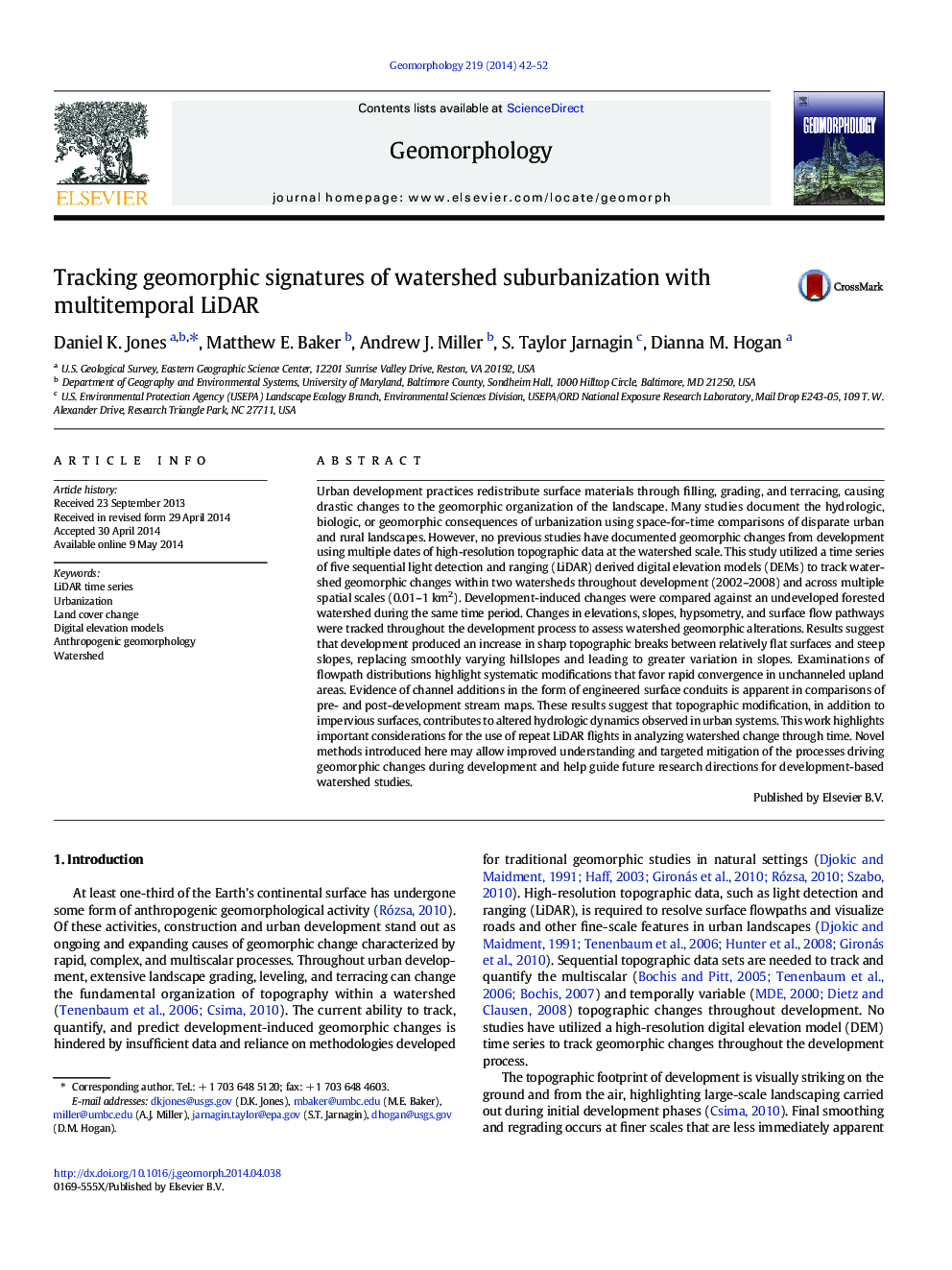| کد مقاله | کد نشریه | سال انتشار | مقاله انگلیسی | نسخه تمام متن |
|---|---|---|---|---|
| 6432446 | 1635430 | 2014 | 11 صفحه PDF | دانلود رایگان |

- Sequential LiDAR DEMs used to track geomorphic changes during urbanization process.
- Developing watersheds compared against undeveloped forested reference watershed.
- Smoothly varying hillslopes replaced by sharp topographic breaks.
- Evidence of channel burial coupled with additions of engineered runoff conduits.
- Increased watershed connectivity independent of impervious surface cover and pipes.
Urban development practices redistribute surface materials through filling, grading, and terracing, causing drastic changes to the geomorphic organization of the landscape. Many studies document the hydrologic, biologic, or geomorphic consequences of urbanization using space-for-time comparisons of disparate urban and rural landscapes. However, no previous studies have documented geomorphic changes from development using multiple dates of high-resolution topographic data at the watershed scale. This study utilized a time series of five sequential light detection and ranging (LiDAR) derived digital elevation models (DEMs) to track watershed geomorphic changes within two watersheds throughout development (2002-2008) and across multiple spatial scales (0.01-1Â km2). Development-induced changes were compared against an undeveloped forested watershed during the same time period. Changes in elevations, slopes, hypsometry, and surface flow pathways were tracked throughout the development process to assess watershed geomorphic alterations. Results suggest that development produced an increase in sharp topographic breaks between relatively flat surfaces and steep slopes, replacing smoothly varying hillslopes and leading to greater variation in slopes. Examinations of flowpath distributions highlight systematic modifications that favor rapid convergence in unchanneled upland areas. Evidence of channel additions in the form of engineered surface conduits is apparent in comparisons of pre- and post-development stream maps. These results suggest that topographic modification, in addition to impervious surfaces, contributes to altered hydrologic dynamics observed in urban systems. This work highlights important considerations for the use of repeat LiDAR flights in analyzing watershed change through time. Novel methods introduced here may allow improved understanding and targeted mitigation of the processes driving geomorphic changes during development and help guide future research directions for development-based watershed studies.
Journal: Geomorphology - Volume 219, 15 August 2014, Pages 42-52